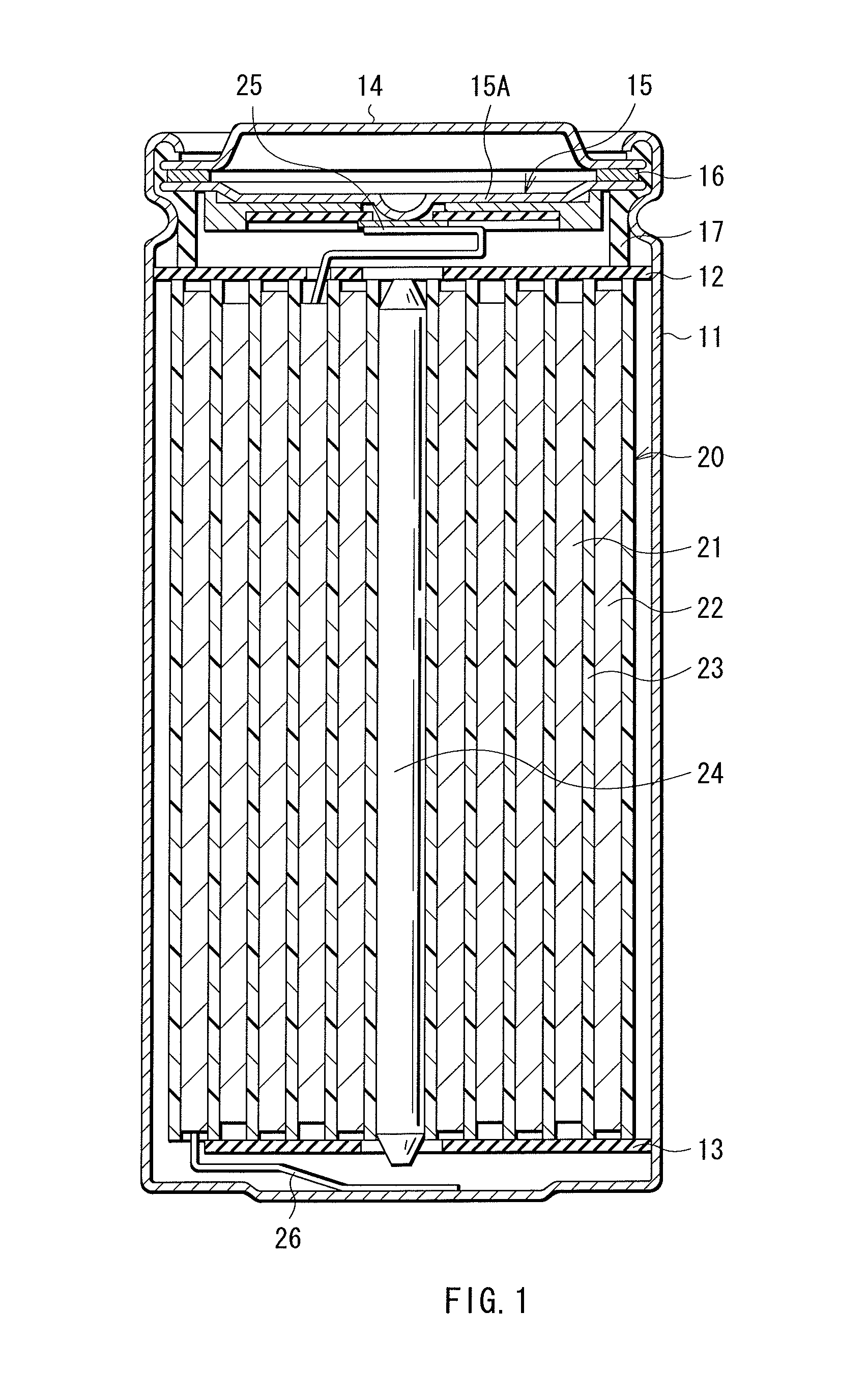Electrolyte and secondary battery
- Summary
- Abstract
- Description
- Claims
- Application Information
AI Technical Summary
Benefits of technology
Problems solved by technology
Method used
Image
Examples
examples
[0196]Specific examples of the present invention will be described in detail.
examples 1-1 to 1-32
[0197]The cylindrical type lithium ion secondary batteries illustrated in FIG. 1 and FIG. 2 were fabricated by the following procedure.
[0198]First, the cathode 21 was formed. In this case, first, lithium carbonate (Li2CO3) and cobalt carbonate (CoCO3) were mixed at a molar ratio of 0.5:1. After that, the mixture was fired in the air at 900 deg C. for 5 hours. Thereby, lithium-cobalt composite oxide (LiCoO2) was obtained. Subsequently, 91 parts by mass of LiCoO2 as a cathode active material, 6 parts by mass of graphite as a cathode electrical conductor, and 3 parts by mass of polyvinylidene fluoride as a cathode binder were mixed to obtain a cathode mixture. Subsequently, the cathode mixture was dispersed in N-methyl-2-pyrrolidone to obtain paste cathode mixture slurry. Subsequently, both faces of the cathode current collector 21A were uniformly coated with the cathode mixture slurry by using a coating device, which was dried to form the cathode active material layer 21B. As the cath...
examples 1-33 to 1-48
[0202]A procedure similar to that of Examples 1-1 to 1-32 was executed, except that combination of the sulfone compound and the nitrile compound or the like was not used as illustrated in Table 2. However, in Examples 1-47 and 1-48 in which the ether compound was used, a mixed solvent obtained by mixing EC, DMC, and the ether compound at a weight ratio of EC:DMC:ether compound=30:60:10 was used.
[0203]Cycle characteristics and safety respectively at 23 deg C. and 45 deg C. for the secondary batteries of Examples 1-1 to 1-48 were examined. The results illustrated in Table 1 and Table 2 were obtained.
[0204]In examining cycle characteristics at 23 deg C., first, 2 cycles of charge and discharge were performed in the atmosphere at 23 deg C., and the discharge capacity at the second cycle was measured. Subsequently, the secondary battery was charged and discharged repeatedly in the same atmosphere until the total number of cycles became 200 cycles, and thereby the discharge capacity at th...
PUM
 Login to View More
Login to View More Abstract
Description
Claims
Application Information
 Login to View More
Login to View More - R&D
- Intellectual Property
- Life Sciences
- Materials
- Tech Scout
- Unparalleled Data Quality
- Higher Quality Content
- 60% Fewer Hallucinations
Browse by: Latest US Patents, China's latest patents, Technical Efficacy Thesaurus, Application Domain, Technology Topic, Popular Technical Reports.
© 2025 PatSnap. All rights reserved.Legal|Privacy policy|Modern Slavery Act Transparency Statement|Sitemap|About US| Contact US: help@patsnap.com



